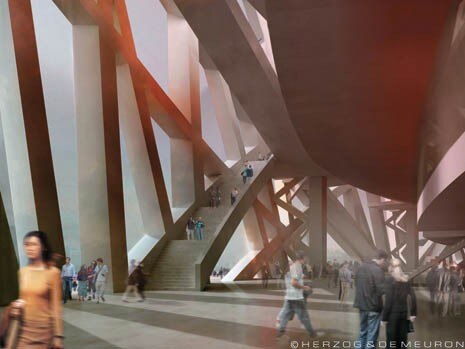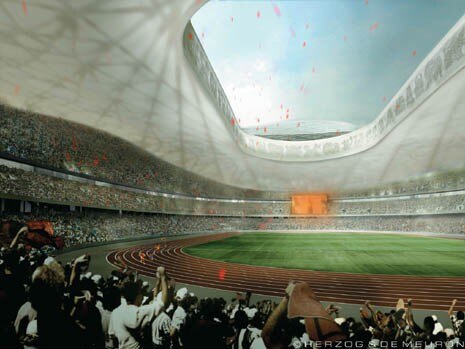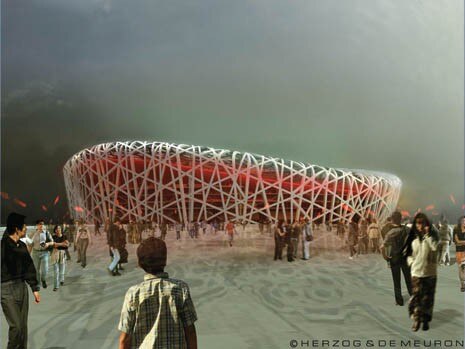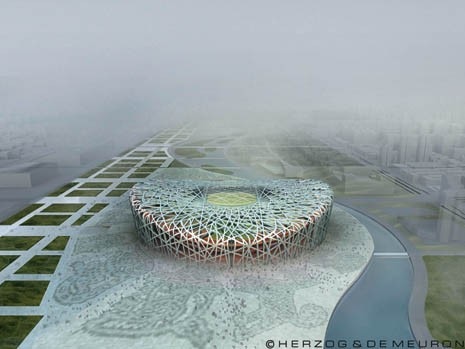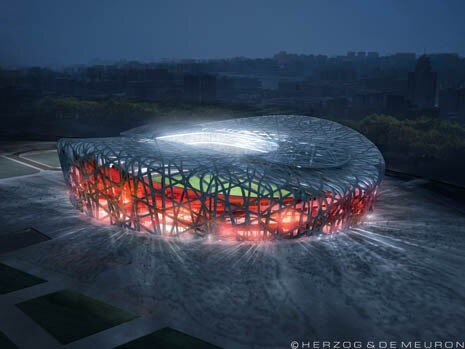Despite the SARS epidemic that is threatening to derail China’s economic boom and undermine the authority of its political leadership, the Chinese government is determined that nothing will stand in the way of the successful staging of the 2008 Olympics in Beijing.
China is using the games to signal that it has moved beyond its sweatshop economy, characterised by low-wage commodity production, bicycles, social conformity and corruption. To this end it is pressing ahead with a building programme that is ambitious even by the feverishly overheated standards of exploding Asian cities.
The Chinese were still concealing the true extent of the SARS outbreak in April when they announced that the competition to design the Olympic stadium had been won by Herzog and de Meuron. They were more forthcoming about the epidemic by the time the shortlist for the competition for the Olympic pool was unveiled in May. But they were still determined that construction would begin on the stadium this year. In fact, with a reminder of the authoritarian planning methods of the Mao era, they had already set a precise date and time: December 24 at 10 am. And work on the pool is scheduled to start even earlier, with the date and time announced before the architect was actually selected.
The pool and the stadium are just two of the major projects underway in the Chinese capital. Rem Koolhaas has won the competition to design a headquarters building in the form of a cluster of towers for Chinese television. And Albert Speer is busy promoting his plan for a 24-kilometre-long north-south axis for Beijing, running all the way from the Olympic site in the north, where Herzog and de Meuron’s stadium will occupy a prominent position on a slight hill, to a huge new railway station in the south.
Stung by previous criticisms of its sometimes murky approach to the allocation of construction contracts, Beijing’s municipality has been proclaiming its determination to pursue design excellence and maintain a transparent and fair tendering process. This is why the competition had a somewhat unwieldy 13-strong jury, whose members included seven Chinese experts alongside Jean Nouvel, Rem Koolhaas, Kisho Kurokawa, José Luis Mateo and Benedetta Tagliabue. Also on the jury was Dominique Perrault, who was also a finalist in the swimming pool competition, in which he was up against Norman Foster, Shin Takamatsu, Rafael Viñoly and others.
Although the shortlist included Vittorio Gregotti, it was mainly characterized by the usual collection of firms known only by their initials, which have come to dominate international stadium design by turning out an interchangeable series of huge spectator machines that can process crowds quickly and efficiently yet lack personality or charisma. In this context, the appointment of Herzog and de Meuron may be seen as a sophisticated choice. It demonstrates that China has reached the stage where it does not need to do the obvious thing. In so doing, the Chinese have secured a structure that will undoubtedly upstage Sydney’s Olympic stadium, with its now-conventional arrangement of structural masts. Beijing will have the most memorable stadium since Frei Otto’s tents for Munich.
Herzog and de Meuron have designed stadiums before. They did a relatively modest football stadium in Basel and a big one for Munich, driven as much as anything by Jacques Herzog’s well-known personal passion for football. But Beijing is different. Football, with its confrontation between two goal mouths, requires a very different atmosphere from a stadium where activities are concentrated around the rim. The proportions and sightlines are not the same. Herzog and de Meuron’s proposal is both radical and very simple. The Beijing stadium, seating 100,000 people, will be like no other. The architects call it a ‘bird’s nest’. It is formed from an apparently random pattern of structural bands rising out of the ground to create the stadium bowl, almost like a gigantic version of a papier-mâché structure built up from layers of paper strips overlaid on a mould.
The structure is composed of a network of ‘woven’ together concrete elements, with the gaps in the structure filled in with what the architects call ‘inflatable cushions’. Spectators reach their seats by walking through the nest structure into a concourse, treated as a covered urban space lined by shops, cafés and restaurants. From here they move by sets of stairs to one of the three seating tiers. According to Herzog, ‘We wanted to get away from the usual technocratic stadiums, with their architecture dominated by structural spans and digital screens’.
In Beijing there will be no distinction between architectural facade and structure. ‘It is simple and almost archaically direct in its spatial impact. The crowd is the architecture. The regular proportions are intended to shift the spectators and the track and field events into the foreground’.
